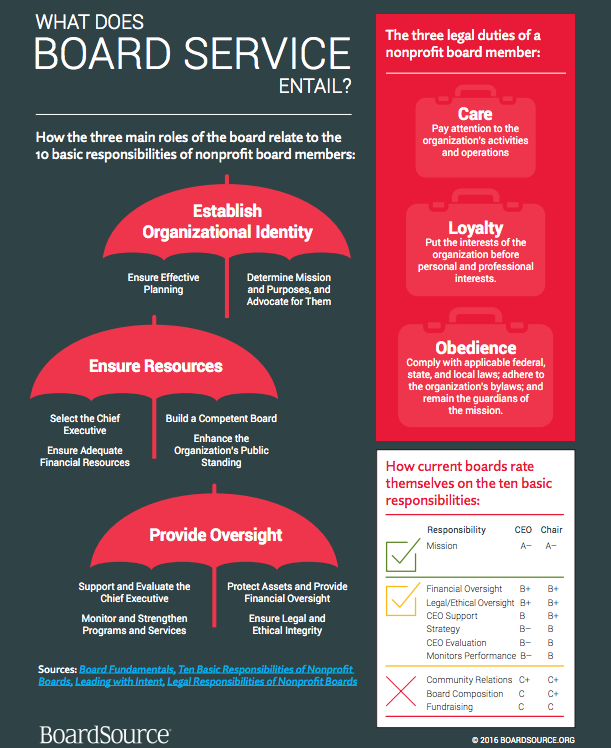"The board of directors plays an important role in organizational development and sustainability. Recruiting a diversity of experience and representation of communities served is an essential first step. However, there must be systems, policies, and a board culture that affirms new board members as changemakers with a valued voice, not tokens." - What are some strategies for supporting sustainability for organizations in the gender-based violence movement?
Every nonprofit has a Board of Directors that is legally responsible for overseeing the affairs of the organization. The board typically is not in charge of the day-to-day affairs of the nonprofit (unless it is an all-volunteer organization), but rather provides mission-based leadership and oversight. Board members need more than passion and enthusiasm for the organization's vision, mission or general good intentions. They must understand all of their responsibilities and actively perform duties to the best of their ability. The board as a whole must govern while each individual member must provide active support. Understanding the board’s role and clearly outlining roles and responsibilities between board and staff will assure stronger capacity, effective operations and strategic advancement.
A number of organizations across the country have created promising practices to provide guidance on the best way to operate and manage a nonprofit, including how a board of directors should govern. Promising practices are intended to be aspirational in nature; no organization will be able to achieve every promising practice at first. They provide the staff and board with valuable goals and objectives to work toward.
Contact your state nonprofit association for information on promising practice guidelines in your area.
The resources listed in this chapter are intended to provide a basic understanding of the roles and responsibilities of a board of directors and how to put those roles and responsibilities into practice. Additional information is also provided to help you determine your organization’s strengths and challenges in order to build the capacity of the board to effectively work toward the organizational mission.

This handy flowchart created by BoardSource can be shared with your board members as an easy reference tool. PDF version here.
![]() What to Do with Board Members Who Don't Do Anything (Board Café)
What to Do with Board Members Who Don't Do Anything (Board Café)









